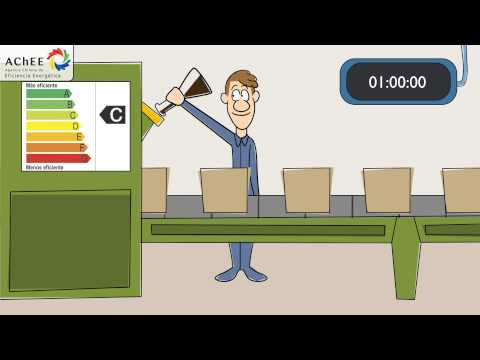Power Semiconductors: The Key to Greater Energy Efficiency
Introduction:
Energy efficiency has become an increasingly important concern in our society. In a world where resources are limited, it is essential to find solutions that allow us to make the most of the energy we consume. In this context, power semiconductors have become the key to achieving greater energy efficiency in a wide range of applications. In this article, we will explore how these devices are changing the way we use and manage energy, and how they are contributing to a more sustainable future. Read on to discover everything you need to know about power semiconductors and their impact on our daily lives!
What are power semiconductor devices?
Power Semiconductors: The Key to Greater Energy Efficiency
In the constant search for greater energy efficiency, power semiconductor devices have become key pieces in numerous electronic applications. These components, built from semiconductor materials, allow the electrical power to be controlled and regulated efficiently. In this article, we will explore what the main power semiconductor devices are and their importance in the field of energy efficiency.
MOSFET Transistors
Metal-Oxide-Semiconductor Field-Effect Transistors (MOSFETs) are one of the most widely used power semiconductor devices in the industry. These transistors allow controlling the electric current through the voltage applied to the gate. Its main advantage is its low resistance in the conduction state, which results in less energy loss and greater switching efficiency.
IGBT Transistors
Insulated Gate Bipolar Transistor (IGBT) transistors are another widely used type of power semiconductor device. These transistors combine the advantages of MOSFET transistors and bipolar junction transistors (BJT), allowing for greater power control and greater current handling capability. IGBTs are ideal for high power applications, such as frequency converters in motor control systems.
power diodes
Power diodes are semiconductor components that allow the unidirectional flow of electrical current. Like transistors, power diodes are used to control and regulate power in different applications. These diodes are characterized by their low forward voltage drop and their ability to handle high currents. Schottky diodes, for example, are widely used in high frequency applications due to their low voltage drop.
Insulated Gate Bipolar Junction Transistors
Insulated gate bipolar junction transistors (IGBT) are power semiconductor devices that combine the characteristics of transistors
What is the energy efficiency factor
Power Semiconductors: The Key to Greater Energy Efficiency
In the constant search to optimize consumption and make the most of energy resources, power semiconductors have become a fundamental piece. These electronic devices have the ability to regulate and control electrical energy efficiently, contributing to greater energy efficiency in various sectors.
The energy efficiency factor is a key indicator to evaluate the performance of electronic devices. It is defined as the relationship between the useful power of a device and the total power consumed by that device. In other words, it is the ability of a system to convert electrical energy into a useful result, minimizing energy losses in the form of heat.
Power semiconductors such as power transistors and thyristors play a crucial role in improving energy efficiency. These devices allow you to control the amount of energy supplied to the different components of a system, avoiding waste and optimizing performance.
One of the most notable aspects of power semiconductors is their ability to quickly switch between on and off states. This allows the amount of energy delivered to the components to be precisely regulated, minimizing losses and maximizing efficiency.
Additionally, power semiconductors are also capable of withstanding high voltages and currents, making them ideal for high-power applications. Their specialized design and construction allows them to handle large amounts of power without overheating or damage, further contributing to energy efficiency.
Where can we use power circuits
Where can we use power circuits
Power circuits are essential components in a wide variety of electronic applications that require high levels of current and voltage. These circuits are specifically designed to handle large amounts of energy and provide the power needed to power high-performance electrical and electronic devices.
A key area where power circuits are used is in the consumer electronics sector. In devices such as televisions, sound systems, household appliances and air conditioning systems, power circuits are responsible for regulating and supplying the energy necessary for their operation. They are also used in battery chargers, power inverters and uninterruptible power supplies (UPS).
The automotive industry is also a field in which power circuits are essential. In modern vehicles, these circuits are used to control and supply power to a wide range of systems, such as the engine, lighting, climate control, entertainment systems and security systems. Power circuits are especially important in electric vehicles, where they are used to control the charging and discharging of batteries and power the electric motor.
Another field in which power circuits are used is in the generation and distribution of electrical energy. These circuits are used in generators, transformers, and distribution systems to control and regulate electrical power as it is transmitted from generating plants to end users. In addition, they are also used in renewable energies, such as solar energy and wind energy, to convert and regulate the energy generated by solar panels and wind turbines.
In the field of telecommunications, power circuits are essential to ensure the transmission and reception of high-quality signals. They are used in power amplifiers, transmitters and receivers to amplify and regulate the audio or video signal, thus ensuring clear and interference-free communication.
So you know, electronic friends! Power semiconductors are like the superheroes of energy efficiency: they are there in the shadows, working hard so that we can all enjoy an energy-filled life without worrying about high electricity costs. So the next time you turn on the light or use any electronic device, remember to thank those little semiconductors that do all the heavy lifting for us. They are the true MVPs of electronics!




Post Comment